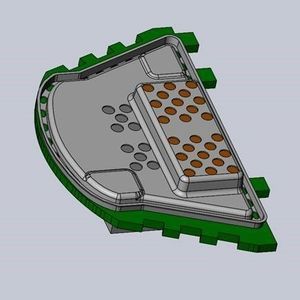
EMI shielding board levelfor circuit boards
Add to favorites
Compare this product
Characteristics
- Options
- EMI, board level
- Applications
- for circuit boards
Description
Two piece board level shields consist mostly of a frame and lid (the two pieces) and are an extremely popular option for shielding today’s highly advanced electronics. SnapShot technology offers all of the advantages of a two piece board level shield and improved reliability, ruggedness, and shielding effectiveness.
The primary reason for choosing a two piece board level shield is to have access to the board components after reflow for inspection, which can be visual or automated optical inspection, and rework or tuning. With traditional frame and lid style EMI shields, the frame is soldered to the board during the reflow process and the lid (shield) is attached to the frame in a post reflow step after inspection and rework is complete. The lid is typically attached to the frame by a series of dimples around the perimeter of the shield creating the mechanical and electrical connection.
A disadvantage of this approach is that it can leave large regions of susceptibility to EMI leakage where the lid is not intimately in contact with the frame. It can also move or shift during heaving vibration and shock, which can create variability in the EMI shielding effectiveness.
SnapShot technology is analogous to a frame and lid style shield if you consider the solder spheres as the frame and the SnapShot shield as the lid. With this view, SnapShot is a two piece board level shield. The solder spheres are attached to the board during the reflow process and the SnapShot shield is attached (“snapped”) in place after all of the inspection and rework is complete.
Catalogs
No catalogs are available for this product.
See all of XGR Technologies‘s catalogs*Prices are pre-tax. They exclude delivery charges and customs duties and do not include additional charges for installation or activation options. Prices are indicative only and may vary by country, with changes to the cost of raw materials and exchange rates.








